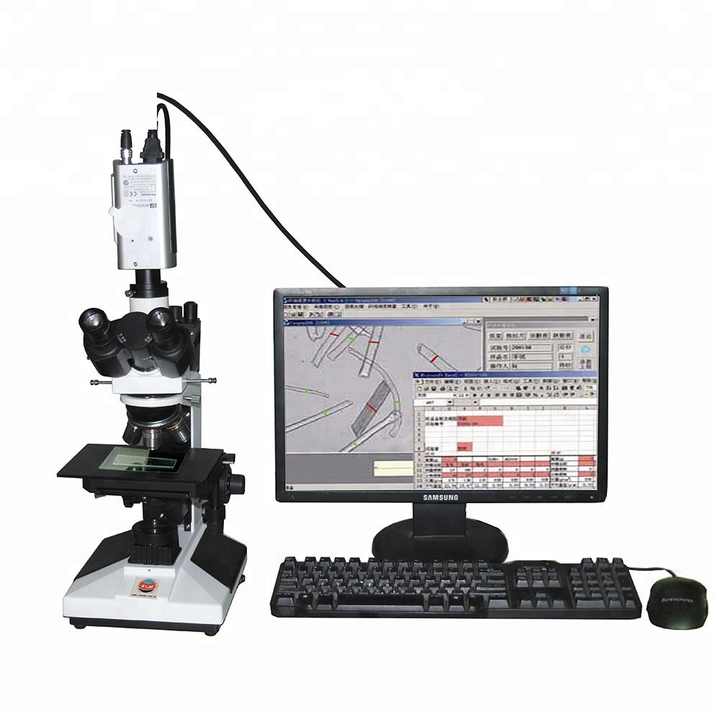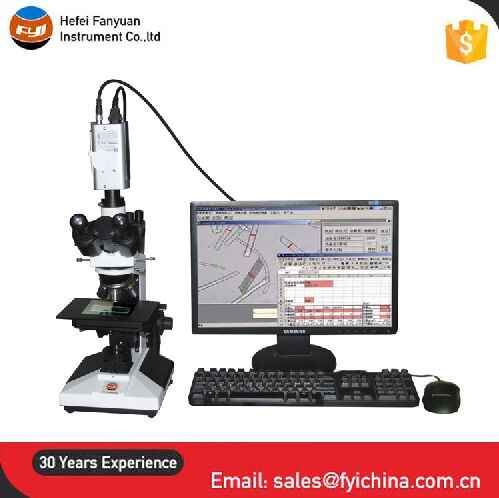Choosing the Right Optical Fibre Diameter Analyser for High Precision
Choosing the Right Optical Fibre Diameter Analyser for High Precision
Blog Article
Optimize Your Fibre Optic Performance: Comprehending Optical Fibre Size Analyser Technology
The performance of fiber optic systems is seriously influenced by the precision of their diameter, an aspect usually forgot in the quest of optimum signal honesty. Understanding the technology behind optical fibre size analysers reveals the elaborate equilibrium in between measurement precision and manufacturing high quality. These gadgets not just enhance compliance with market standards yet also supply real-time insights that can preemptively address prospective concerns. The effects of their use prolong beyond simple measurement; they can essentially modify the landscape of fibre optic effectiveness. What elements should one consider to harness their full potential?
Relevance of Optical Fiber Size
The size of optical fibre plays an important duty in identifying the performance and efficiency of communication systems. Conversely, smaller sized diameters tend to sustain less settings, which can improve signal quality and reduce crosstalk.

Additionally, understanding the size's implications can result in set you back savings by reducing the need for signal boosting and repeaters in comprehensive networks (optical fibre diameter analyser). To conclude, the significance of optical fiber size can not be overemphasized, as it straight affects the overall efficiency and reliability of contemporary interaction systems

Exactly How Size Influences Signal Quality
Signal top quality in optical fiber systems pivots dramatically on the diameter of the fibre. The size affects several crucial parameters, including attenuation, bandwidth, and modal diffusion. A smaller size can result in higher depletion rates, leading to signal loss as light travels with the fibre. This attenuation can endanger the integrity of the transmitted data, leading to a decrease in signal quality, especially over long ranges.
On the other hand, larger diameters typically enable boosted light capture and decreased modal dispersion, boosting signal clearness. In multimode fibers, a bigger core diameter can sustain multiple light modes, but it might likewise present intermodal diffusion, which can weaken signal quality. Therefore, choosing the optimal fiber size is important for achieving the desired performance in specific applications.
In addition, the interaction between the fibre size and the wavelength of the light utilized plays an essential duty in determining the efficient transmission range and total signal stability. Therefore, recognizing how fibre size impacts signal top quality is crucial for network designers and engineers making every effort to enhance optical fiber systems for reliable, high-speed data transmission.
Review of Diameter Analyser Technology
In lots of optical fibre manufacturing processes, precise dimension of fibre diameter is essential for making sure regular performance and quality (optical fibre diameter analyser). Diameter analysers are sophisticated instruments created to assess the physical dimensions of optical fibers with high accuracy. They utilize innovative optical and laser innovations to determine the diameter, ovality, and concentricity of the fiber, therefore supplying essential data for quality assurance
These analysers can run in-line during the production procedure or as part of off-line screening methods. In-line systems enable real-time surveillance, enabling suppliers to change specifications quickly, therefore preserving ideal manufacturing conditions. Off-line analysers, on the various other hand, supply comprehensive assessments of batches, ensuring that any kind of inconsistencies from defined resistances are determined and dealt with.
Size analysers considerably add to the reduction of problems in optical Website fibers, boosting general item dependability. By regularly gauging vital specifications, these technologies help with conformity with industry standards and requirements. As the need for high-performance optical fibres remains to climb, the duty of diameter analysers becomes significantly crucial in achieving the wanted top quality and efficiency criteria in fiber optic systems.
Trick Attributes of Fibre Size Analysers
Although numerous designs of fiber diameter analysers exist, they typically share several essential features that boost their capability and integrity. One of the most considerable functions is high-resolution dimension capabilities, which guarantee exact diameter analyses, essential for keeping high quality control in fiber production. In addition, several analysers incorporate innovative optical sensors made to find minute variants in fiber diameter, therefore supplying invaluable data for procedure optimization.
An additional important function is real-time tracking, enabling operators to obtain prompt feedback on fiber diameter throughout the manufacturing procedure (optical fibre diameter analyser). This ability facilitates rapid adjustments and decreases the chance this article of issues. Several analysers likewise come furnished with easy to use interfaces, making it possible for drivers to quickly browse via setups and information outputs
Furthermore, robust data storage and evaluation capabilities are important for tracking historic performance fads and making certain conformity with industry criteria. These features collectively contribute to the effectiveness of fiber size analysers in maximizing fiber optic performance.
Best Practices for Fibre Optimization

First, routine calibration of optical fiber size analysers is crucial. This makes certain exact measurements and reduces potential inconsistencies that can influence efficiency. Next off, keeping a clean working setting is essential; dust and pollutants can result in indicate destruction.
Additionally, it is essential to choose fibres that meet certain application demands. This includes reviewing elements such as depletion, transmission capacity, and environmental problems. Correct setup techniques should additionally be stuck to, including staying clear of sharp bends and excessive stress, which can compromise fibre stability.
In addition, utilizing advanced surveillance systems can help with real-time efficiency evaluations, enabling punctual recognition of problems. Regular testing and upkeep should be conducted to ensure that fibers continue to be within optimal operational criteria.
Finally, training workers on the most current fibre optimization modern technologies and approaches will enhance their capability to carry out effective approaches. By following these ideal methods, companies can considerably enhance the performance and lifespan of their optical fiber systems, ensuring efficient communication and data transfer.
Final Thought
Finally, the assimilation of optical fiber diameter analyser modern technology is vital for taking full advantage of fibre optic efficiency. By making sure exact measurements of fiber dimensions, these analysers considerably boost signal top quality and reduce losses throughout data transmission. Routine calibration and upkeep of the analysers are vital to maintain optimal efficiency and compliance with industry standards. Inevitably, the application of this modern technology promotes boosted data transmission prices and strengthens signal honesty, adding to the overall effectiveness of fibre optic systems.
Signal quality in optical fiber systems hinges considerably on the diameter of the fibre.In click for info several optical fibre manufacturing procedures, accurate dimension of fibre diameter is vital for guaranteeing constant performance and high quality. As the demand for high-performance optical fibers continues to climb, the function of size analysers comes to be progressively important in attaining the desired top quality and performance standards in fibre optic systems.
These attributes collectively contribute to the efficiency of fiber size analysers in maximizing fiber optic efficiency.
In conclusion, the combination of optical fibre size analyser innovation is crucial for making the most of fibre optic efficiency.
Report this page